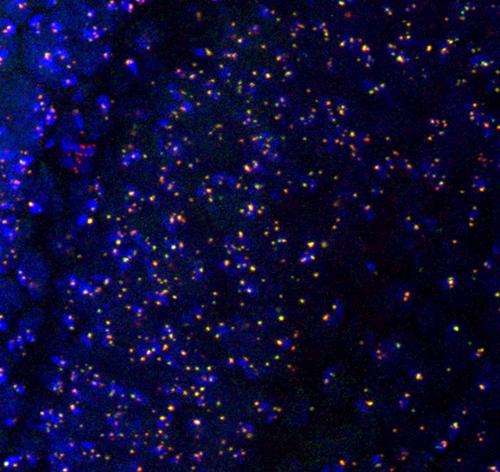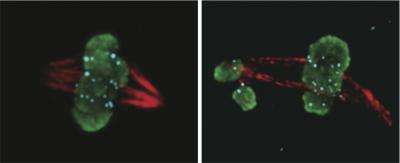How young genes gain a toehold on becoming indispensable

Fred Hutchinson Cancer Research Center scientists have, for the first time, mapped a young gene's short, dramatic evolutionary journey to becoming essential, or indispensable. In a study published online June 6 in Science, the researchers detail one gene's rapid switch to a new and essential function in the fruit fly, challenging the long-held belief that only ancient genes are important.
"We really haven't paid much attention to what is new, because there's so much emphasis on what is old," said Harmit Singh Malik, Ph.D., a member of the Hutchinson Center's Basic Sciences Division and senior author of the study. "This work breaks the paradigm that new genes by definition are not really that important, because if they were important they would be much older."
The less a gene has mutated over the millions or billions of years of its lifespan, the more likely it is to play a key role for its host. But it turns out that the converse is not necessarily true. Young and rapidly evolving genes can be indispensable too. Scientists at the University of Chicago were surprised to find in 2010 that young genes acquire essential functions in the same proportion as old genes, but nobody had explored the biology behind the phenomenon.
Malik and his colleagues examined one such case in detail, starting from the gene's birth and its pathway to a new purpose and evolutionary importance. The fruit fly Drosophila melanogaster, a common model organism in laboratory studies, is host to the relatively new gene Umbrea, which duplicated and began to diverge from its parent gene a mere 15 million years ago.
The scientists compared Umbrea with its parent gene, HP1B, by looking at where each gene's protein product tracks within the cell. Both proteins coat chromosomes, but the Umbrea protein specifically hones to centromeres, the specialized centers that help chromosomes duplicate and segregate when cells divide.
In contrast to its parent gene, fruit flies need Umbrea to survive, and the researchers found that cells missing the Umbrea protein cannot shuffle their chromosomes to the correct cell during cell division. They then tracked the gene's evolutionary progress from dispensable to crucial by examining Umbrea's genetic differences between related fruit fly species and pinpointed a short stretch of DNA that led to the gene's essentiality.
Understanding how Umbrea accomplished its quick transition to its new role could help scientists pinpoint other processes in the cell that are subject to the same form of rapid evolution as centromere proteins, including genes that mutate to become essential for the survival of cancer cells. Such evolution of cancer genes happens extremely quickly, in the lifetime of one individual.
Umbrea's rise was not quite as fast, but 15 million years is brief when compared to the majority of essential genes four to five times its age in the fruit fly, and a few important genes that are more than a billion years old.
"The genetic conflicts that lead to quick changes like those found in Umbrea can also shed light on evolutionary arms races between chromosomes, or even between viruses and host immune genes," said Benjamin Ross, a graduate research assistant in Malik's laboratory and lead author of the study.

The team's findings also point to potential limitations for laboratory model organisms as windows into our own health. While many genes do perform similar tasks in such disparate animals as fruit flies and humans, scientists may be overlooking genes unique to humans that are nevertheless vital. Although Drosophila melanogaster needs Umbrea for its survival, several other very closely related fruit fly species lack the gene entirely.
"What might be essential in one species or even in one tissue type, like a cancer cell, might not be essential in another tissue type or related species," said Malik, also a Howard Hughes Medical Institute Early Career Scientist.
More information: "Stepwise evolution of essential centromere function in a Drosophilia neogene," Science, 2013. www.sciencemag.org/content/340/6137/1211
Journal information: Science
Provided by Fred Hutchinson Cancer Research Center



















